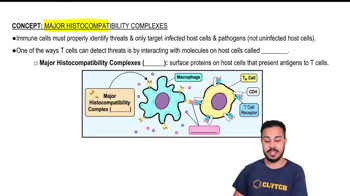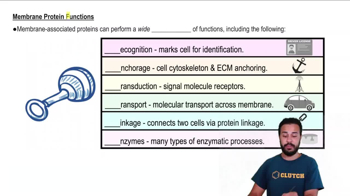Textbook Question
Which structure is not part of the endomembrane system?a. nuclear envelopeb. chloroplastc. Golgi apparatusd. plasma membrane
3590
views
 Verified step by step guidance
Verified step by step guidance Verified video answer for a similar problem:
Verified video answer for a similar problem:



 4:13m
4:13mMaster Endomembrane System: Protein Secretion with a bite sized video explanation from Bruce Bryan
Start learning